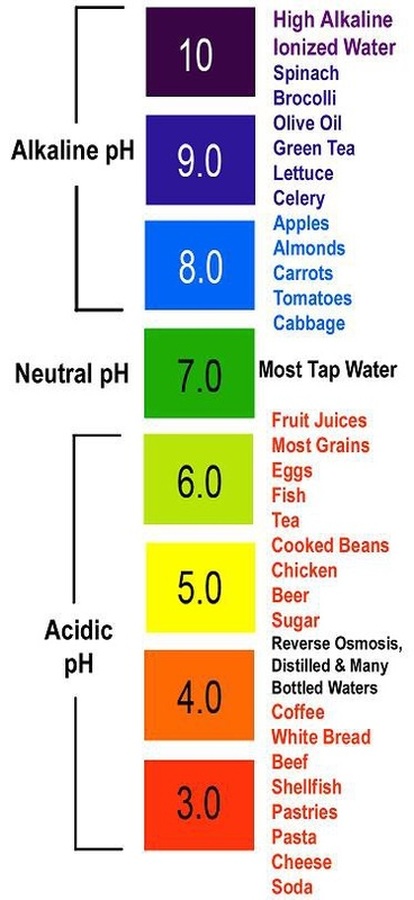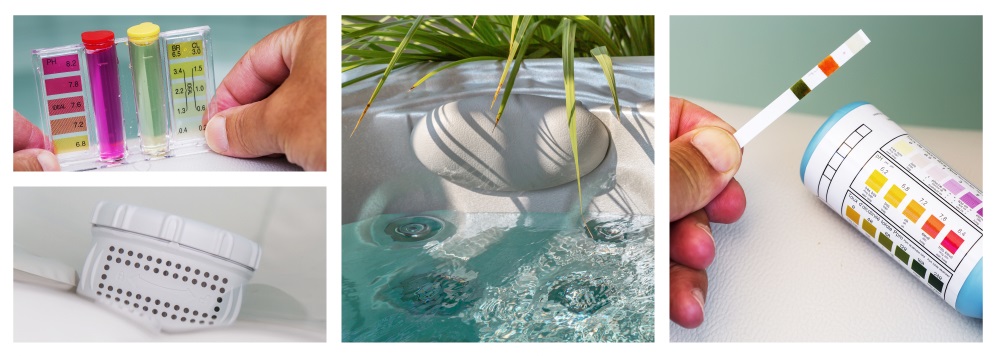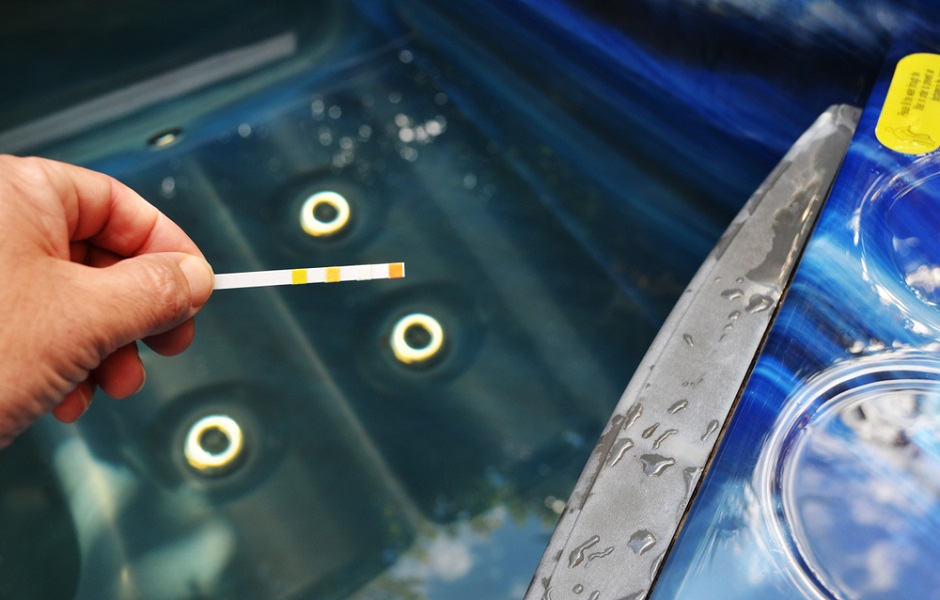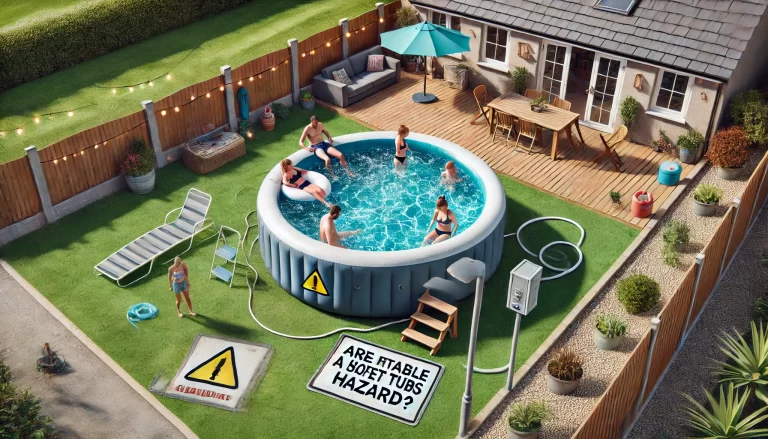How To Lower Alkalinity In Hot Tub: Tips and Trick
Get your hot tub back in balance with our simple guide on lowering alkalinity and restoring water clarity. Learn the easy steps today!
The best way to get the job done is by adding vinegar or lemon juice to your water every time you fill it. This will naturally balance out the pH levels, so be sure to add enough for an effective result! You can also try filling your hot tub with baking soda and then pouring boiling water over the top of it.
Dealing with high alkalinity in my hot tub was causing cloudy water, scaling, and irritation on my skin. I knew it was crucial to address the issue promptly. Here are the methods I used to lower alkalinity levels:
What Happens If You Don’t Fix High Alkalinity?
High alkalinity doesn’t just mess with your water’s balance—it hits your wallet and comfort, too. If left unchecked, it can:
- Cause cloudy water that makes your hot tub look dirty
- Trigger itchy skin and red eyes after every soak
- Scale up your heater and jets, leading to expensive repairs
- Make your sanitizers less effective, so bacteria hang around longer
By staying on top of it, you avoid costly fixes and enjoy clean, safe water every time.
1. Chemical methods:
- pH Decreaser: I opted for this standard and easy-to-use method, available in granular or liquid form. It contains sodium bisulfate, which neutralizes alkalinity. Following the product label instructions, I added the pH decreaser slowly with the jets running and retested the water after several hours to avoid overshooting my target.
- Muriatic Acid: I cautiously used muriatic acid to reduce alkalinity significantly. Wearing gloves and protective eyewear, I diluted it according to instructions. I added it slowly to the hot tub with the jets running, being careful not to add too much to prevent drastic pH reduction and potential damage to my hot tub equipment.
- Soda Ash (Sodium Bicarbonate): Despite seeming counterintuitive, using soda ash in small amounts can lower alkalinity through buffering. I followed the product label instructions and tested the water frequently, using this method with others or for minor adjustments.
2. Non-chemical methods:
- Partial water change: To make minor alkalinity adjustments, I decided to drain a portion of the hot tub water and refill it with fresh water. While effective for more minor changes, it’s less efficient than chemical methods for more significant reductions.
- Reverse osmosis system: As a long-term solution, I installed a Reverse Osmosis (RO) system to remove impurities and minerals contributing to alkalinity. This system helps maintain balanced water chemistry over time.
Alkalinity Adjuster Comparison Table
| Method | Effectiveness | Cost | Best For |
|---|---|---|---|
| pH Decreaser | High | $$ | Everyday use |
| Muriatic Acid | Very High | $ | Tough cases |
| Lemon Juice | Moderate | $ | Eco-friendly adjustments |
| Vinegar | Moderate | $ | Budget-conscious users |
| Partial Refill | Low–Moderate | Free–$ | Mild issues |
Important tips:
- I tested my water before and after adding chemicals, ensuring I determined the right amount and stayed on track.
- Adjustments were made slowly and in small increments to avoid overshooting target levels, erring on the side of caution.
- Maintaining balanced water chemistry was crucial, focusing on lowering alkalinity and keeping pH and total hardness within optimal ranges.
- Consulting my hot tub manual and seeking advice from a pool professional was essential, as different hot tub models and water conditions may require unique approaches.
Why Balanced Alkalinity Feels Better. When your alkalinity is dialed in, you’ll feel the difference:
- No more dry skin or red eyes
- Soaking becomes more relaxing, not itchy or uncomfortable
- Your water smells clean, not chemical-heavy or stale
How to Tell If You’ve Reached the Right Alkalinity
A well-balanced hot tub feels good the moment you dip in:
- Water is clear—not hazy
- Skin feels smooth—not tight or itchy
- No white flakes or scaling on the tub walls
Use a test strip or digital meter to confirm your alkalinity is in the 80–120 ppm range. Don’t rely on guesswork—testing is the only way to be sure.
Understand Ideal Alkalinity and Its Impact:
Alkalinity refers to the level of basicity in the water, measured on a scale of 0 to 14. An alkaline substance has a pH level higher than 7.2. When your hot tub becomes alkaline, it can be less effective in killing bacteria and may lead to issues like breathing difficulties or skin rashes.
The ideal alkalinity range for a hot tub is between 80 and 120 parts per million (ppm). This range helps stabilize pH levels, which should be between 7.2 and 7.8 for optimal comfort and water clarity.

Reduce Alkalinity with Sodium Bisulfite:
Sodium bisulfite is an effective chemical for lowering alkalinity. Sprinkle it over the water’s surface, and it will quickly do the job. The average cost is affordable, making it a budget-friendly option.
Use Muriatic Acid for Effective Results:
Muriatic acid is another great option for lowering pH and alkalinity levels. It is reasonably priced and can be found at your local hardware store. Start with 1/4 cup per 100 gallons of water and adjust as needed.
Go Natural with Vinegar or Lemon Juice:
Add vinegar or lemon juice to your hot tub for a cost-effective and eco-friendly approach. Two cups of vinegar to 20,000 gallons of water or one cup of lemon juice to 10,000 gallons can reduce alkalinity. For more, read about how to remove calcium flakes from the hot tub.

SAFELY INCREASE ALKALINITY WITH BAKING SODA:
Baking soda (sodium bicarbonate) is a common household product easily found in any supermarket. It raises alkalinity. Add 1 cup per 100 gallons of hot tub water, but avoid exceeding 10 cups, as it may damage the filtration system.
Recommended dosage:
Add 1 cup of baking soda per 100 gallons of hot tub water. The recommended maximum amount is 10 cups per 100 gallons, but never add more than this because it can damage your filtration system.
NOTE: For safety reasons, close the lid and cover your hot tub when you add baking soda. Carbon dioxide (produced by the soda) will escape and potentially make breathing difficult for anyone nearby.
How to Save Money while Lowering Alkalinity in Your Hot Tub
Lowering alkalinity in your hot tub doesn’t have to break the bank. Using cost-effective alternatives like lemon juice and vinegar, you can achieve the desired pH level without compromising water quality. Let’s explore 7 money-saving tips to manage alkalinity in your hot tub effectively.
- Use Lemon Juice Instead of Vinegar: Lemon juice is an excellent alternative to vinegar for reducing alkalinity. You can find a 100% lemon juice bottle at most grocery stores for just $2-$3. Adding lemon juice will effectively lower the alkalinity, but remember to test your pH levels afterward.
- Determine the Right Amount to Use: For a 150-gallon hot tub, use approximately 1 cup of vinegar or lemon juice every time you fill it. Regularly testing the water with a test strip will help you gauge the pH level and ensure you achieve the desired alkalinity.
- Test Water Regularly: Regularly testing the water with a test strip is essential to maintain your hot tub’s desired pH and alkalinity levels. If you notice the pH is too high or too low or alkalinity is high, take corrective measures by adding acid or base as needed.
- Be Cautious When Adjusting pH Levels: When adjusting pH levels, avoid adding too much acid or base at once or mixing them with chlorine. Mixing can result in harmful fumes, which should be avoided for safety reasons.
- Solving High Alkalinity Issues: If your hot tub’s alkalinity is too high, several budget-friendly solutions exist. Add 2 cups of vinegar or 1 cup of lemon juice to 10 gallons of water. If this doesn’t suffice, try using sodium bicarbonate (baking soda) at 2 cups per 10 gallons and retest pH and alkalinity levels.
- Addressing Low pH Levels: For low pH levels, consider adding an alkalinity increaser like sodium carbonate (washing soda) or sodium bicarbonate (baking soda) at a rate of 1/2 cup per 10 gallons. Test the water again and adjust the dosage if necessary.
- Double the Dosage If Needed: If the pH levels remain unchanged after adding alkalinity, double the dosage and test again. Keep adjusting the amounts until you achieve the desired pH and alkalinity levels. If you are raising Alkalinity, go Here.
NOTE
Do not directly add baking soda or calcium carbonate crystals to your hot tub. The effervescence from these can damage jets and other equipment, causing hot tub repair costs. Baking soda also contains gluten, which may affect users with celiac disease if they swallow it.
Best Tools to Test and Track Alkalinity Over Time
Tools That Make Testing Easy: Keep your sanity (and water) in check with the right tools:
- Test Strips: Affordable and easy to use, available at any pool store or online
- Digital Testers: A bit pricier, but super accurate and reusable
- Water Testing Kits: Great for folks who like lab-style precision
Testing once a week keeps your water balanced and your equipment running smoothly.
How to Increase Hot Tub Alkalinity:
You can add baking soda or an alkalinity increaser to the water. Baking soda is a common and safe option that has minimal effect on the pH. You can use one tablespoon of baking soda per 100 gallons of water or follow the instructions on the alkalinity increaser product. You should test the water’s alkalinity level before and after adding the chemicals.
When to Call a Pro (And What They Can Do Better)
If your hot tub is still out of balance after multiple tries, or you see signs of scaling or cloudy water that won’t clear up—it’s time to bring in the experts.
A hot tub pro can:
- Perform detailed water analysis
- Flush your system safely
- Recommend chemical brands that work for your setup
Getting expert help early can save hundreds in damage and downtime.











3 Comments